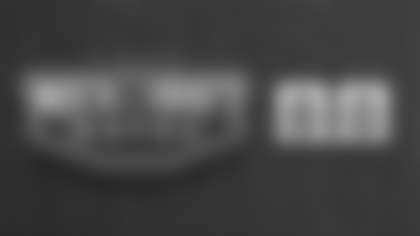Bills Wall of Famer Steve Tasker, a seven-time Pro Bowl special teamer, was invited to the NFL offices in New York this week to provide input on altering kickoffs. The committee was made up of former players and current coaches, and Tasker came away from the meeting encouraged and confident the proposed changes will be approved in time for the 2018 regular season.
"The league is committed to saving it," said Tasker of the kickoff play. "They're leaving it in the hands of the coaches and the experts to tweak it."
Still one of the most dangerous plays in the game, the kickoff is still causing injuries that the league would prefer to avoid. So they sought the input of those who played and coach the game to craft some changes to the current rules on kickoffs to reduce injuries.
Among the most promising is the institution of an "iron cross" signal from the designated return man, which will act like a fair catch signal on punt returns.
"What that signal will do is effectively render the ball dead whether it lands in the end zone or falls short of the end zone," Tasker said. "This idea was brought about because players were getting hurt too often on touchbacks. A player on the coverage team is busting downfield doesn't know if the guy is going to take a knee and neither does the player trying to block him on kick return and guys were getting hurt on a play that didn't even materialize into anything.
"The idea with the iron cross is the play ends sooner and players can avoid full speed contact and the risk of injury is reduced."
The iron cross signal would not be an option on onside kicks or squib kicks according to Tasker.
"They're going to stipulate that the ball has to travel as a high kick in the air and there will be a line of demarcation as to how far it has to travel in order for an iron cross signal to be an option."
The other likely change is the alignment of the return team. Only three of the 11 players on the return unit will be allowed behind their own 40-yard line. The other eight must be lined up somewhere between their own 40 and the opponent's 45-yard line.
"Now because of the alignment changes you've got eight players up closer to the kickoff line," said Tasker. "So you'll only have three players deep. Now those three players are all going to be athletes. They aren't going to be offensive linemen. So they'll be able to field the ball better and make something out of it."
Meanwhile the coverage team will not be able to take a running start at their line of scrimmage. They'll be fixed at their own 35 and not be allowed to take off until the ball is kicked.
That figures to create a whole lot more room on the field for return men.
"It's going to open up some space out there," Tasker admitted. "The question is how those front line guys are going to engage the coverage guys."
The committee did consider that such changes could lead to unintended consequences. A perfect example are the results of some of the more recent changes on kickoffs, like moving the touchback out to the 25-yard line.
"For the first time in history the last two years, the starting point for returned kickoffs is less than the 25-yard line, which you get on a touchback," Tasker explained. "It used to be it was always better to return it because a touchback only got you to the 20, but now that it's the 25. Teams are having a hard time getting it there on a return. So the unintended consequence is kicking teams are purposely kicking short knowing they have a good chance of keeping them inside the 25, rather than just giving them a touchback. The rate of returns went up and so too did the injuries."
Will these new proposed changes bring about other unintended consequences? If there's more room for a returner to run, he'll naturally have a greater chance of reaching top speed. If a coverage player can get to the spot in time, it could lead to a pretty big collision.
"Hopefully it'll be virtually identical to what we've seen," Tasker said if the changes are approved. "The big unknown is the timing of the return with the return team and the coverage team and how long it'll take for the return guy to get there. A lot of it is going to be dependent how often they iron cross, how good your kicker is, what direction he kicks it in."
Under these proposed new changes what is certain is the complexion of NFL rosters will be different.
"What they're thinking about now is the roster is going to need a special teams core with more athletes than there may be on the roster," Tasker said. "You might need 10 linebackers and six running backs and seven or eight wide receivers or a couple of more tight ends. So you might only carry eight offensive linemen instead of nine or only six defensive linemen if you play a 3-4 front on defense instead of seven.
"There will need to be three more athletic players in the back. You can't join up and even do a two-man wedge anymore, so the premium for return units will be more athletic players who can run with the ball if necessary."
The competition committee will now take it from here. They must write in the changes to the kickoff rule, and then the league's owners must vote on the proposal, hopefully during the Spring League Meeting in Atlanta from May 21-23.






